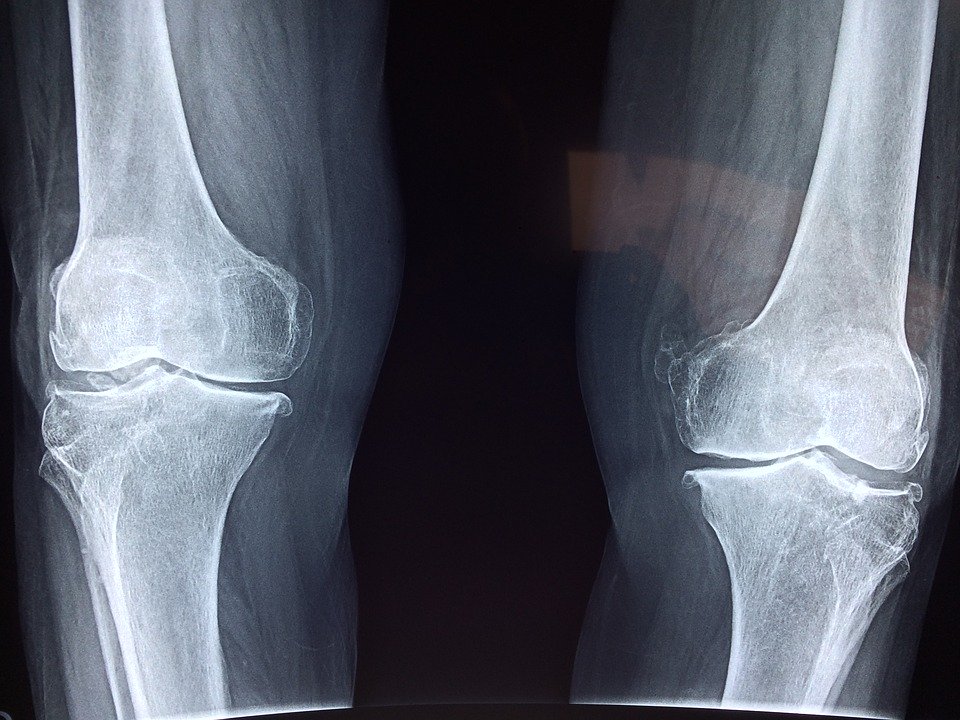
Joint replacement is a very popular medical procedure all over the world. In some cases, only joint replacement can help patients to reduce joint pain and improve mobility.
What is joint replacement?
Joint replacement is an operation that involves removing damaged parts of joint and replacing them with an artificial joint, or prosthesis. Endoprosthesis totally repeats structure of joint and its function. Parts of prosthesis can be made of metal, ceramics or polyurethane. These materials are hypoallergenic.
Various types of joints can be replaced with prostheses. These types of joints are replaced most often:
- Hip.
- Knee.
- Ankle.
- Elbow.
- Shoulder.
- Fingers.
The procedure of joint replacement takes less than two hours, but recovery can last few months.
When joint replacement is performed?
Various diseases could lead to articular cartilage destruction. The most common reasons for joint replacement are osteoarthritis, rheumatoid arthritis, and joint injuries.
First of all, doctor advises non-surgical therapy, such as weight loss, medications, and physiotherapy. But if these methods are not effective, doctor can offer joint replacement.
The main indications for joint replacement are:
- Joint pain that limits such everyday movements as walking, climbing or descending stairs.
- Deformation of joint.
- Persistent inflammation of the joint.
- Poor effect from non-surgical treatment.
Joint replacement is a typical treatment for older people. Typically, they have reduced activity and that’s why prosthesis will wear out during 15-20 years. Younger people wear out prostheses faster and they may need a joint revision surgery with time. Joint failure risk is higher with high activities or excessive body mass.
Prepare for joint replacement
Before an operation a doctor assess patient’s overall health state. He will study:
- Patient’s medical history, chronic diseases, allergy to drugs.
- Medications, that patient takes.
- Results of blood tests.
- Results of X-ray or computed tomography of joints.
There are some contraindications for surgery, such as inflammatory diseases. In this case patient should receive suitable treatment and only after this the joint replacement may be considered.
The next question is what type of anesthesia should be used. There are two types of anesthesia: general and spinal. General anesthesia means that patient will be asleep and unable to feel pain during all the intervention. Spinal anesthesia leaves patient awake but he will not feel anything from the waist down. Anesthetist chooses a type of anesthesia based on the overall health state and patient’s preferences.
What happens during joint replacement?
The patient arrives to the hospital on the appointed day. First of all, patient will receive the required drugs. Just before operation he receives anesthesia.
What does knee joint replacement look like, for example? Doctor makes a long surgical cut above patient’s knee, pushes kneecap and muscles out of the way. Then he removes damaged cartilage and ends of femur and tibia.
Doctor fixes an artificial joint to femur and tibia. He makes this using medical cement and metallic screws. Then surgeon tests function of a knee and sutures a wound. An operation takes about 2 hours.
After surgery, the patient is moved to special recovery room, where the medical team will monitor his vital signs.
Recovery after operation
A few hours later patient will be moved to his hospital room. After operation patient will feel a pain, that’s why he will receive painkillers. Also patient will receive medicines to prevent blood clotting.
The day after surgery patient starts to move his leg in order to promote blood flow to the tissues around the new knee. Rehabilitologist will develop an individual plan of recovery, which includes various physical exercises. Day by day patient will increase his activity level. A week later patient will be able to walk along the corridor with a cane.
Doctor will let patient know, when he can leave a hospital. This depends on the results of operation and patient’s condition.
The process of recovery can last few months. That’s very important to follow all doctor’s recommendations and make physical exercises. Soon patient will be able to return to active life. Patient can take part in various low-impact activities, such as walking, golfing or biking. Nevertheless, he should avoid activities which include running or jumping.
Advantages of joint replacement in Germany
Annually thousands of foreign patients arrive to German hospitals for joint replacement. Here they will get quality treatment. Main advantages of joint replacement in Germany:
- Joint replacement is performed by surgeons with great experience.
- Surgeons use only modern types of prostheses.
- Annually German clinics demonstrate the best results in joint replacement.
- Minimal risk of postoperative complications.
- Comfortable hospital rooms.
Everyone may undergo joint replacement in German hospitals using the services of Booking Health. The company will choose the best orthopedic clinic and help to organize a trip to Germany. You can read more about German clinics and find the prices for treatment on the website BookingHealth.com.